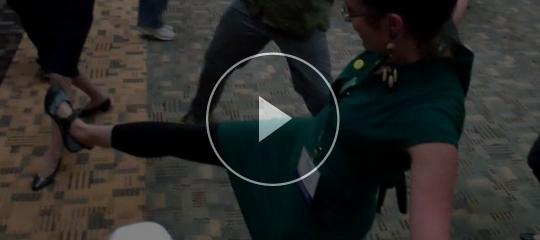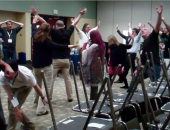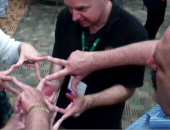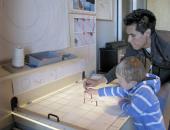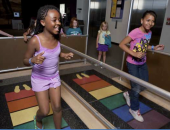Under review at the Journal for Research in Mathematics Education
Research in experimental and developmental psychology, cognitive science, and neuroscience, suggests that tool fluency depends on the mergence of perceptual and motor aspects of its use, an achievement we call perceptuomotor integration. We investigate the development of perceptuomotor integration and its role in mathematical thinking and learning. Just as expertise in playing a piano relies on the inter-animation of finger movements and perceived sounds, we argue that mathematical expertise involves the systematic interpenetration of perceptual and motor aspects of playing mathematical instruments.
Under review at Gesture.
This study examines the role of gesture in collective imagining, the embodied process of bringing objects and events into quasi-presence during social interaction. Drawing on the phenomenological tradition, we argue in favor of an alternative to the gestures-as-simulated-action account proposed by Hostetter and Alibali (2008). Specifically, we suggest to view gestures as key constituents of phantasms, quasi-present objects that are produced through multi-modal utterances. This perspective highlights the ways in which gestures mark profound transformations of participants’ experiential histories transformations that open up, for the speakers, new insights into the matters they strive to imagine. The study of these insights led us to emphasize not the simulative, but the creative roles of gestures. Our account of gesture in collective imagining is illustrated by a microanalysis of an episode from an interview with a mother-child dyad following their interaction with a mathematics exhibit in a science center.
The goal of this paper is to explore qualities of mathematical imagination in light of a classroom episode. It is based on the analysis of a classroom interaction in a high school Algebra class. We examine a sequence of nine utterances enacted by one of the students whom we call Carlene. Through these utterances Carlene illustrates, in our view, two phenomena: (1) juxtaposing displacements, and (2) articulating necessary cases. The discussion elaborates on the significance of these phenomena and draws relationships with the perspectives of embodied cognition and intersubjectivity.
This article presents a microanalysis of a short episode of scientific discourse among several youth and a museum guide at the National Center for Atmospheric Research. The episode centered around an exhibit about light scattering in the atmosphere as an explanation for why the sky is blue. The youth were debating the reason for the sky's blue color, and the museum guide stepped in to offer an explanation. Viewing the science exhibit as a 'situated activity system,' the author examined numerous aspects of this episode: speech, body position, physical manipulations of the exhibit, gesture, and gaze. The author also frames this episode of situated meaning making as the interaction among multiple, simultaneously occurring dialogues in which the youth and museum guide are motivated by varying goals and intentions. Finally, the author describes this episode as a rather 'uninteresting' moment in a larger, incremental, cross-institutional learning trajectory, arguing for the need for more multi-site ethnographies that seek to articulate the various contributions of both formal and informal settings to life-long learning.
